We are all familiar with our baked beans and hot dogs, that has been part of our American diet for over a hundred years. But, how much do you really know about beans? This week we are going to take a deep dive into what hopefully will amount to more than “A hill of beans”.
Botanically speaking beans are legumes, just like peas and lentils. The beans themselves are actually the seeds of these plants. Both the beans and the pods are edible.
Beans have been a dietary staple for many centuries. Before Columbus discovered the New World it was primarily Fava beans. As with so many other plants like corn, potatoes, tomatoes, rubber, coffee, and chocolate, the common bean as we now know it, originated in Central and South America.
Currently we grow many varieties of beans, many of which arose as landraces, meaning they either arose or were more commonly bred for a certain area and its specific climate, where they adapted to and flourished.
Many immigrants to the United States brought with them a small satchels of landrace beans from their hometowns in Europe and Asia. This has resulted in a wonderful variety of beans from all over the world available to us gardeners.
Gardeners will recognize that currently most beans are divided into three general categories: Bush beans, Pole beans, and Runner beans. Bush beans are small upright bushes that do not need support to grow on like pole beans which grow up a pole, for example, or runner beans which are more of a sprawling vine.
Peas are in the same family as beans and sometimes have edible pods, but not always.
Kinky Facts/Nerd Food: If you are not interested in the botany of beans and peas then skip this section.
Peas belong to the species Pisum sativum, of which there are a few main varieties. The peas themselves are the green seeds found within the fruits of pea plants, which are known as pods. In some cases, this outer pod is edible, while in other cases, only the peas inside are eaten.
It should be noted that there are plenty of other legumes which claim the “pea” title without being peas. For example, the black-eyed peas technically falls into the classification of beans, which we’ll get to in a moment.
While the pea technically meets the criteria for being a bean (a seed within a pod), the word pea specifically refers to members of Pisum sativum, therefore we can consider the pea to be its own item.
A pea plant may either grow low to the ground as a bush variety, or as a pole variety, which climbs up and around its surroundings. Pea vines produce tiny, thread-like ends which are capable of twisting around nearby objects, allowing the plant to support and lift itself as it grows.
Types of Peas
With all this popularity throughout time and history, you might think we would have tons of peas to choose from. Ironically enough though, there are only three types of true peas:
English Peas:which are also known as shelling peas or garden peas and do not have an edible pod.
Snow Peas: which is a type of sugar pea and have a flat and broad edible pod.
Sugar Snap Peas: which are also a type of sugar pea, which have a thick and crunchy edible pod.
HEALTH BENEFITS OF BEANS
Beans have been nurturing man with a steady source of plant protein for many centuries. Dried beans were a staple on every continent for people everywhere. They were easy to grow, did not take up much space, and if timed properly you could get several crops in a single growing season. Dried beans were easily preserved for the long winters that always threatened man with starvation.
Beans are an excellent source of both soluble and insoluble fiber. Soluble fiber helps lower blood cholesterol levels and insoluble fiber helps feed your microbiome in your gut as well as keeping stool soft which helps bowel movements.
Beans also contain a type of starch which is resistant to digestion. This helps produce beneficial short chain fatty acids by fermentation of the starch. Short chain fatty acids are chock full of health benefits. Resistant starches also contribute to a feeling of fullness after eating beans, which helps with weight loss, and helps the function of insulin, improving diabetes.
Beans are also an excellent source of B vitamins such as folate. Folate is essential for the production of red blood cells. Folate is also essential for proper development of a human fetus, without which their nervous systems will not properly develop, and they will have a neural tube defect. Some beans are excellent sources of iron, potassium and zinc, and trace elements.
PLANT PROTEIN VS ANIMAL PROTEIN
One of the greatest benefits of beans and peas is that they are a reliable source of plant proteins. This doesn’t sound like a big deal to us here in the United States where we have diets that typically are very high in protein, especially animal protein.
However, in poor areas of the world, animal protein is not always available, so their diets must rely on plant-based proteins which are easier to acquire than animal protein and much less expensive.
Plant proteins are inferior to animal proteins. The reason is that animal proteins often are complete proteins, meaning they contain all the essential amino acids (building block to proteins) that we cannot make and must get from our diets.
The human body utilizes twenty different amino acids that it uses to build all the proteins it needs. Nine of those must be obtained from your diet and thus are called Essential amino acids.
Plant proteins are usually not complete (except for peas and soybeans). However, you can combine them to get all the essential amino acids. However, the protein content of plants is considerably less than from animals. In other words, you would need to eat a whole lot more plant food than animal food to get the same amount of protein.
Even in the case of peas and soybeans, you would have to eat a large volume of them to get the same protein content from a small amount of meat, fish, or dairy product. Animal proteins are better absorbed in our guts than plant-based proteins.
The American Indians of the Southwest famously did this with what is known as the Three Sisters. They ingeniously planted corn with squash at its base which shaded the other plants and reduced their water needs, and then they planted pole beans which used the corn plant for support, climbing it.
This also eliminated the necessity for wooden poles to support the beans which were very difficult to come by in the American Southwest.
That famous combination of corn, squash, and beans provided them with all the essential amino acids they needed and overcame the problem of any one plant protein not being complete.
The other benefit of planting beans next to corn and squash is that all beans and peas are nitrogen fixing plants. This means that they have nitrogen fixing nodules on their roots which convert nitrogen from soil and the air and release it into the soil, essentially fertilizing themselves and any other plants in the vicinity!
They are able to do this amazing feat by the help of certain types of bacteria that are symbiotic (work together with the plant so both benefit) with the plant root, colonizing the nitrogen fixing nodules.
Savvy gardeners will exploit this ability and plant nitrogen fixing plants adjacent to fruit trees or other plants to naturally fertilize them.
It is a great way to enrich your soil, since growing plants of any kind is ALL ABOUT THE SOIL. [See Chapter 2 of my Bible of Alternative Medicine] The soil is everything, it is the Terrain that is so important.
The same concept of the Terrain also applies to the human body, to the Extracellular Matrix, which is the “terrain” in which all the body’s cells are embedded. I will be revisiting this concept in an upcoming paper on Quinton’s Marine Plasma.
The white balls attached to the roots are nitrogen fixing root nodules, a feature of all legumes including peas, beans, and lentils.
On my farm I practice Permaculture. I plant many types of nitrogen fixing plants among my fruit, berry, and nut trees to help augment their production. There is the additional benefit of the nitrogen fixing plant itself providing food, such as the case with beans, peas, sea buckthorn, goumi berries, and Siberian pea shrubs that I use on my farm. However, I digress. Let’s get back to the other health benefits of eating beans.
The Modern-Day Version of The Three Sisters
There are some ways we can combine plant-based proteins to get a complete set of essential amino acids without having to grow the three sisters. Here are some the Medical Underground likes to use.
Peanut Butter on Wheat Bread
Rice and Beans
Pasta salad and kidney beans
Hummus on Pita bread
Beans help foster a healthy liver and gut, helping prevent things like fatty liver disease and leaky gut, while at the same time promoting a healthy microbiome and digestive system.
Beans are full of antioxidants helping your immune system, as well as preventing infections and cancer. Beans stabilize your blood glucose levels, helping control diabetes.
Beans are important for cardiovascular health, helping lower blood pressure which protects the heart, as well as lowering cholesterol levels.
ARE BEANS POTENTIALLY TOXIC?
Beans have a host of health benefits, but they do require some caution, and need to be prepared properly. The reason being that beans, especially white and red kidney beans and broad beans contain large amounts of lectins. One such lectin is phytohemagglutinin. Lectins can cause some gastrointestinal distress. In very large amounts they can also cause some blood clotting.
The good news is that lectins are not present in canned beans. When you are cooking or preparing stored dry beans of any type, you must soak them in water for at least five hours and then tossing out the water, this will remove the lectins.
Lectins can also be removed by boiling beans for ten minutes. Once the lectins are removed by any of the above methods, the beans are safe to eat. The pressurizing process used to make canned beans destroys their lectin content, making them safe for consumption.
KEY POINT ON PROPERLY COOKING BEANS
When you are cooking beans of any type, you must cook them at a temperature greater than 180 degrees F to destroy the lectins. If you use a crock pot and you cook for hours at less than 180 degrees F, you will not only not destroy the lectin content, but you will concentrate it and make its toxicity five times greater.
When I mentioned earlier about soaking beans for five hours, that is the minimum amount of time. You can soak them for much longer times, some people soak them for 18 hours or more. It is said this will help soften hard dried beans as well.
Here is the Million Dollar Question that I am sure is burning in the minds of all my readers this week: WHY DO BEANS MAKE YOU FART? Without a doubt, beans are synonymous in the public’s mind with giving you “gas”. Every kid knows it for sure, when shortly after a generous serving of hot dogs and baked beans, the farting begins.
So, that begs the question, why do beans give us so much gas? Once again, the answer comes down to resistant starches.
Resistant starches are not digested in the usual matter by the digestive enzymes in our GI tract that digest everything else going through. These resistant starches are complex carbohydrates. In beans it is raffinose. This undigested raffinose passes into the colon (large intestine), where intestinal bacteria ferment it, producing a whole host of beneficial biochemicals including short chain fatty acids, while in turn feeding the gut bacteria.
However, one of the side effects of this fermentation process of raffinose is the production of gases, causing you to fart away like a drunken sailor.
So, the answer to the Million-Dollar question is beans make you fart because they contain complex carbohydrates or starches along with fiber that is resistant to normal digestion, resulting in their fermentation and thus GAS production. My inner nerd just loves this stuff!
HOW THE MEDICAL UNDERGROUND USES BEANS
First of all, let us start with the most practical advice I can give you, and that is, how to make them less gassy? There are several ways you can lessen or even eliminate your beans effect on your flatulence (farting).
Cooking your beans in a pressure cooker. The only caveat I would mention is to make sure you do so at a high reading of about 15 pounds and cook for ten to twelve minutes. This method will eliminate the gas issue by breaking down the resistant starches. Do not forget that before you put your beans in the pressure cooker you have to soak them in water for over eight hours and then pour off the water and use new water for the pressure cooker.
Baking Soda: You can add a teaspoon of baking soda to four quarts of water and your beans and bring it to a boil. The baking soda will help break down the resistant carbohydrates in the beans. Shortly after you bring it to a boil you can shut it off and allow it to cool down and then drain it and rinse it twice.
Prolonged Soaking: This is the easiest method and is the method preferred by the USDA. You must soak your beans by completely immersing them in water. Every three hours you have to drain the water off, rinse it and refill the container with fresh water. You have to do this for twelve hours and this will remove most of the offending carbs.
Key Point: Beans are such a wonderful part of our diets, and you should consume them on a daily basis in some form or another. The good news is that after a daily consumption for three months, gas production falls off sharply!
Not all beans are created equal when it comes to their gas production. Here is a chart with some of the least and most offensive beans.
The Medical Underground highly recommends including a variety of beans in your diet. The best way to ensure a proper organically grown supply is to grow your own. Peas and beans are very easy to grow, and you can grow more than one crop in a season, even up north here in New England.
In a small space you can have pole and runner beans climbing up support wall or trellis, with bush beans at their feet in long low rows. They beautifully flower as well and provide you with an abundance of health enhancing beans.
The current times we live in are very perilous, made worse by a totally incompetent group of world leaders that appear intent on getting us into a Third World War. Growing and storing your own food supply may make all the difference in the survival of you and your family.
Here is an image of a large scarlet runner bean covering a pole of some type. One bean plant of this size will produce a large amount of beans, each bean being capable of producing yet another large plant. A handful of heirloom bean seeds of several different varieties can give you a bounty of food and especially protein.
Storing Your Beans
The Medical Underground uses several methods for bean storage. Large quantities of beans are inexpensive and store very well. I like to use 5-gallon buckets, that do not have to be food grade, since we are going to line them with five-gallon Mylar bags.
You pour the rice into the mylar bag and then add a 2,000-cc oxygen absorber and seal the bag either with an iron or I prefer to use a curling iron, then put a cover on the bucket and mark it with a magic marker with the date and the contents. Using this method the beans or peas or any grain or rice will last twenty-five years, as long as you store them in a cool, preferably dark place.
An alternative method that the Medical Underground uses is to vacuum seal your beans or peas in Mason jars. You can also reuse glass jars from your kitchen such as pickle jars or jelly jars. This will require putting them into a small chamber that seals and is then vacuum sealed. All of these materials can be found on my much-hated Amazon.
This is a great method if you are collecting various types of beans, just to be able to grow out different kinds for different flavors. Being the nerd that I am, I have currently been on a binge of buying hundreds of different varieties of heirloom beans and wild peas.
Since I usually like to have roughly one hundred beans of each variety, it only requires a small bottle that I can vacuum seal and store in a cook dark place for future needs. This is an inexpensive way to have a large variety of beans that you can grow out many years later or eat at any time.
The Medical Underground believes that having adequate food security means a two-year supply of food for you and your family and some unexpected folks in need. Since any crisis will require those of us with the most know-how and humanity to extend a helping hand to those in need. Wow, who would ever have guessed that I grew up in New Jersey, LOL.
Rice is very inexpensive as well. You can use the same method of five-gallon buckets that I described above and store hundreds of pounds of rice that will keep for 25 years! The combination of beans and rice could easily keep you alive and with enough calories not to waste away and still enough energy to survive any situation.
There is a very large variety of beans available to us today, and many of them will depend upon your own taste and how you want to prepare them. However, some have been shown to be even more potent in their nutritional content than others.
Lentils, which are rich in polyphenols, anti-inflammatory, and antioxidant compounds.
White beans, which come in several varieties and have a high fiber and protein content.
Black beans, which are packed with vitamins, minerals, and antioxidants.
chickpeas, which are a good source of plant-based protein, iron, and folate.
Pinto beans, which are high in fiber, potassium, and magnesium.
Red kidney beans have a low glycemic index and can help regulate blood sugar levels.
Lupini beans, which are high in protein and amino acids.
However you choose to eat your beans and other legumes, including them in your daily diet will have so many benefits. So be creative, make bean salads, new bean dishes, and grow as many varieties as you can, storing all that you need.
Well, that ends yet another exciting episode of the Medical Underground. Hopefully, you found it both entertaining and educational. If you have not already subscribed, then hit that subscribe button right now. If you are a free subscriber, stop being so cheap and step up and become a paid subscriber. It is the cost of Happy Meal once a month, and a hell of a lot healthier for you!
Until our next exciting episode, May God Bless You and Your Family and The United States of America! And for those of you who believe in Jesus Christ always remember, Miracle Shall Follow Miracle and Wonders Shall Never Cease.
This disclaimer provides that such medical information is merely information – not advice.
If users need medical advice, they should consult their doctor or other appropriate medical professional.
***Copyright © 2023 by Dr. Ralph La Guardia, MD
All rights reserved. This article or any portion thereof
may not be reproduced or used in any manner whatsoever
without the express written permission of the publisher
except for the use of brief quotations in an article review.




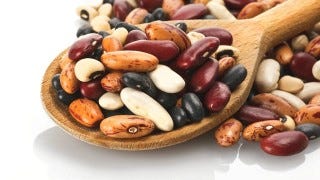
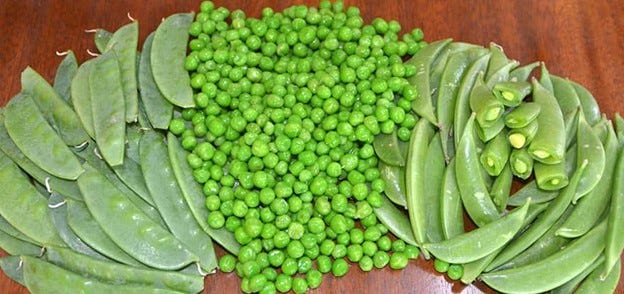



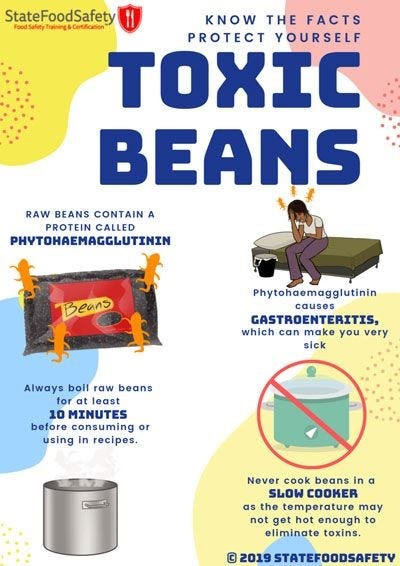

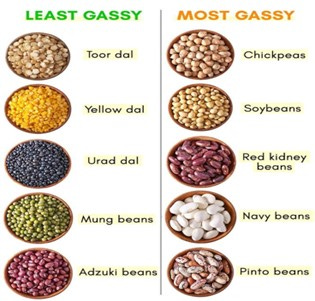

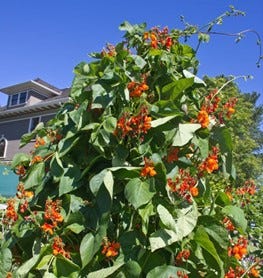


Tammy, That is so cool, your husband is a very interesting and talented fellow. Doc
Thanks Tom, I appreciate your comments. Truth be told, I too slept through high school chemistry, the teacher sucked,...LOL Doc